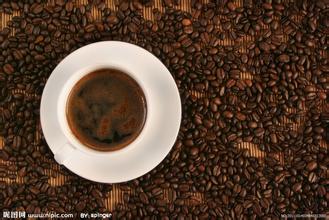Jamaican Coffee Manor Silver Mountain Manor Fine Coffee beans taste introduction to Jamaican Blue Mountain Coffee
It gives me a feeling of jewel-like quality. It's precious like a jewel. It's complex, but it's very mild, it's sweet, it's very alcoholic. You must taste it in order to know what I am talking about." The unique growing conditions and care taken in all production processes make Jamaica Blue Mountain Coffee famous. Jamaica is one of the world's smaller coffee producing regions, harvesting about 40000 bags- 60 kg/sack a year (Jamaica Blue Mountain coffee is actually shipped in 70 kg barrels, they are the last country to still use this traditional packaging method, but their production is 60 kg/sack, because that is the international standard for coffee production measurement). Compare Brazil, the world's largest coffee exporter, with annual production in 3000000 bags- 60 kg/sack. The Japanese invest heavily in Jamaica's Blue Mountain coffee growing regions and take a 90 percent share of production each year. The rest of the world must bid for the remaining 10 percent, or 3500 barrels. Real Blue Mountain coffee has a unique flavor that makes it the most expensive coffee in the world. It is in extremely high demand, so there is some shortage in the market. The unique growth conditions give rise to the unique flavor of Blue Mountain Coffee, which also makes it one of the "best coffee". Global 100% pure Blue Mountain coffee is produced in a specific area of the Blue Mountains in eastern Jamaica. Every step of its cultivation period and processing process has passed through the strict quality management standards of the Jamaica Coffee Industry Bureau before it can be certified as "pure Jamaica Blue Mountain coffee." For small coffee, this altitude is already quite high, and the mountains are very uneven, and the harvesting process is very difficult (coffee is almost exclusively female). The trees are mainly small seed species "Geisha High Bred" type. Seeds from these trees have been exported to other countries such as Hawaii, Kenya, Papua New Guinea and elsewhere, but there they have been unable to recreate the flavor of Blue Mountain coffee beans. In the steep and high altitude mountains, carefully cultivated and harvested, all Jamaica Blue Mountain coffee is ground, tasted and distributed by the Jamaica Industry Association. The coffee in the cup tastes very clean, and it is one of the sweetest coffees in the world. This flavor has been described by Jim Reynolds in Peet Coffee and Tea: "The best example of Jamaica Blue Mountain coffee is its aromatic, smooth, dense aroma. The National Coffee Management Association of Colombia, like Kenya's National Coffee Management Association, is a model for coffee organizations. Colombia is more concerned with product development and production promotion than other producing countries. It is this, coupled with its superior geographical and climatic conditions, that makes Colombia coffee delicious and famous all over the world. The status of coffee in Colombia is illustrated by the fact that all vehicles entering the country must be sprayed to avoid inadvertent disease and damage to coffee trees.
Colombia is blessed with Atlantic and Pacific ports, which help to reduce the cost of transporting coffee. It is the only country in South America that has this condition. The main productive areas of Colombia are located in the Central and Eastern Mountains. The most important plantations distributed along the Central Mountains are located in Medellin, Armenia and Manizales. Of the three regions mentioned above, Medellín produces the best quality coffee and the highest price, characterized by full grains, rich nutrition, rich aroma and moderate acidity. These three areas are collectively known as MAM.
Colombia coffee is often described as having a silky smooth taste. Of all coffees, it has the best balance. It tastes soft, smooth and ready to drink. Colombia coffee comes in more than 200 grades, which means that coffee is very regional. The coffee-producing region of the country is located in the Andes, where the climate is mild and the air is humid. Colombia has three Cordillera mountains running north-south, right into the Andes. Coffee is grown along the highlands of these mountains. The terraces provide a diverse climate, with harvest seasons throughout the year and different types of coffee maturing at different times. And fortunately, unlike Brazil, Colombia doesn't have to worry about frost damage. About 700 million coffee trees are documented in Colombia, 66 per cent of which are grown on modern plantations and the rest on small traditionally managed farms. Coffee was first introduced to Colombia in 1808 by a priest from the French Antilles via Venezuela. Today the country is the second largest coffee producer after Brazil, the world's largest exporter of Arabica coffee beans and the world's largest exporter of washed coffee beans.

Important Notice :
前街咖啡 FrontStreet Coffee has moved to new addredd:
FrontStreet Coffee Address: 315,Donghua East Road,GuangZhou
Tel:020 38364473
- Prev

Introduction to Santa Barara Manor in Honduras Coffee Manor
Honduran coffee comes from El Salvador. At first coffee production was in a state of unavoidable heat until the frost in Brazil in 1975. At that time, Brazil was hard hit and coffee production plummeted, while Honduras took the opportunity to take advantage of the surge in coffee production from 500000 bags to 1.8 million bags and was ransacked. It was only after that that coffee production in Honduras really developed. Now, Honduran coffee.
- Next

Introduction to Yinshan Manor in the flavor producing area of Blue Mountain Coffee Manor in Jamaica
(Portland) and St. Thomas (StThomas) producing areas. In eight years, Jamaica exported more than 375 tons of pure coffee. In 1932, coffee production reached its peak and more than 15000 tons of coffee was harvested. But by 1948, the quality of coffee had declined and Canadian buyers refused to renew their contracts, so the Jamaican government set up a coffee industry committee to save top coffee.
Related
- Does Rose Summer choose Blue, Green or Red? Detailed explanation of Rose Summer Coffee plots and Classification in Panamanian Jade Manor
- What is the difference between the origin, producing area, processing plant, cooperative and manor of coffee beans?
- How fine does the espresso powder fit? how to grind the espresso?
- Sca coffee roasting degree color card coffee roasting degree 8 roasting color values what do you mean?
- The practice of lattes: how to make lattes at home
- Introduction to Indonesian Fine Coffee beans-- Java Coffee producing area of Indonesian Arabica Coffee
- How much will the flavor of light and medium roasted rose summer be expressed? What baking level is rose summer suitable for?
- Introduction to the characteristics of washing, sun-drying or wet-planing coffee commonly used in Mantenin, Indonesia
- Price characteristics of Arabica Coffee Bean Starbucks introduction to Manning Coffee Bean Taste producing area Variety Manor
- What is the authentic Yega flavor? What are the flavor characteristics of the really excellent Yejasuffi coffee beans?

